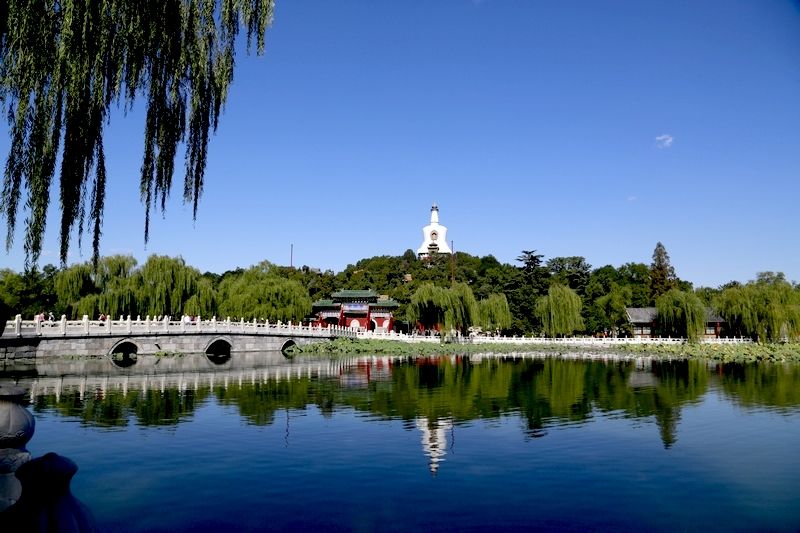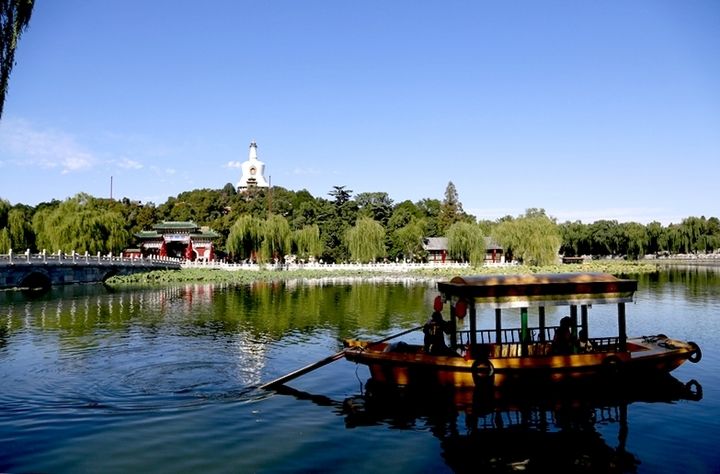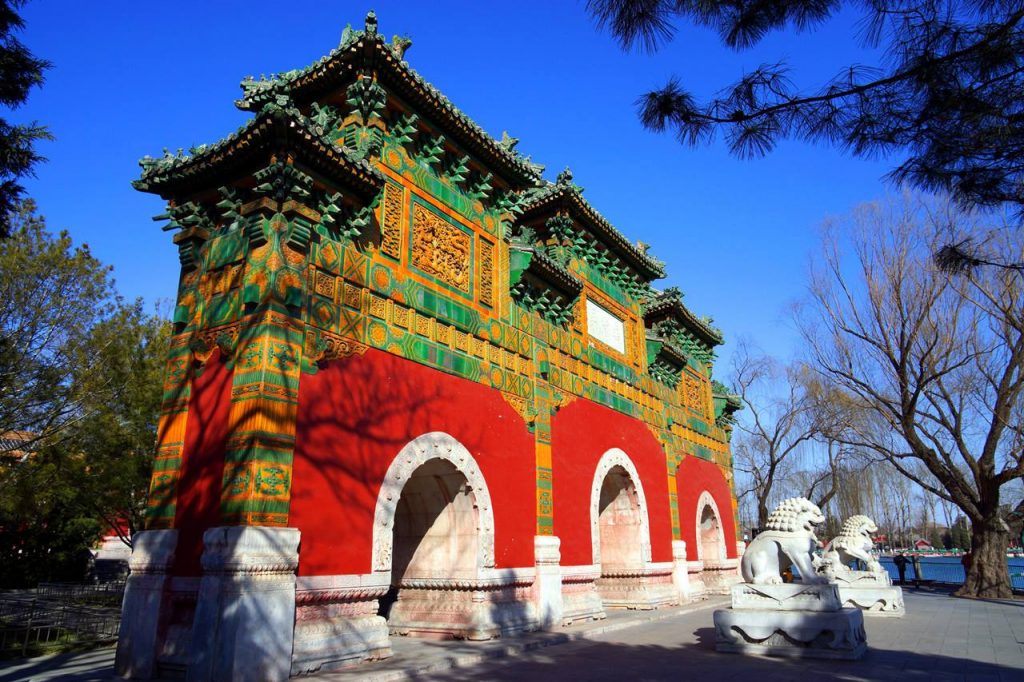style pagoda
3 min readBeihai Park’s imperial connection began in the 13th century, when Kublai Khan chose the site for his palace, a marvelous structure according to Marco Polo. Little has survived of the Khan’s pleas ure dome except an enormous green jade jar that was given to him in 1265 and was purporte ore his wine. You’ll find this 3. 5-ton jar displayed in the Round City (tuanchen cucture in the Round City is the Hall of Receiving Light (chenggu tuanc entrance. The main strue in the rouna cityars the mair th recelvi ighte theastuan dian ) so named because the emperor would come here to watch fireworks. A Buddha given by Burma to the Empress Dowager Cixi is now exhibited there The statue is carved of white jade and wears a crown and garment of gold sheet.

An evening cruise on one of Beijing’s many waterways.ies across the bri Jade Isle (qionghuddao) lies across the bridge from the Round City. In summer,lotus flowers bloom in the channel to the east of the bridge and this flowery motif is echoed on the bridge itself, which is decorated with carved lotus flowers and petals. At the foot of the manmade hill that dominates Jade Isle is the pleasant Yong’ an Temple (yong’ansi).of the hill. Erected in 1651 in honor of a visiting Dalai Lama, it was flattened by an Far more dramatic than the temple is the White Dagoba(baita) that stands on to earthquake and later rebuilt. From a tiered base, it rises approximately 118 feet (36 m) towards the sky and is said to contain Buddhist scriptures, robes and other sacred objects.

Though visitors aren’t allowed inside the dagoba, they can inspect the Tibetan sutras that are carved inside its front gate. The views of the city from atop the hill are dazzling.
Ringing the northwest shore of Jade Isle is the Painted Gallery ( qiongdao chunyin bei), double-tiered- covered veranda. Midway along the length of the gallery,near the boat dock, is the Hall of Rippling Waters(yilantang )that’ s home to the famous Fangshan Restaurant(fangshan fanzhuang) and its elaborate imperial banquets.

You can reach the north side of Beihai by taking a boat to Five Dragon Pavilion wulongting) or walking around the park via the isles’ east bridge. Sticking out from the northwest shoreline, the Five Dragon Pavilion was built on 1543 for Ming dynasty emperor who wanted a nice spot to fish and admire the moon. Neighboring Minor Western Heaven(xidoxitian) is square-shaped- temple dedicated to Guanyin, the Buddhist Goddess of Mercy, which Emperor Qianlong built for his mother. Don’t miss the delightful otanical gardens in the park’s no corner that features a greenhouse and lotus-filled pools. By the north Nine Dragon Screen(jiulongbi),an89-foot-long (27-m) structure covered in tiled dragons that was designed to ward off evil spirits; it was built in 1756.

It should be noted that historic monuments are only half the fun of visiting the park.Like all parks in Beijing, Beihai is a hive of fascinating human activity, especially in the morning when it’s wielding swords, couples waltzing, alligraphers writing pavement with water, choirs of senior citizens adminton players and Peking singers who exercise their voice by screaming across the.








